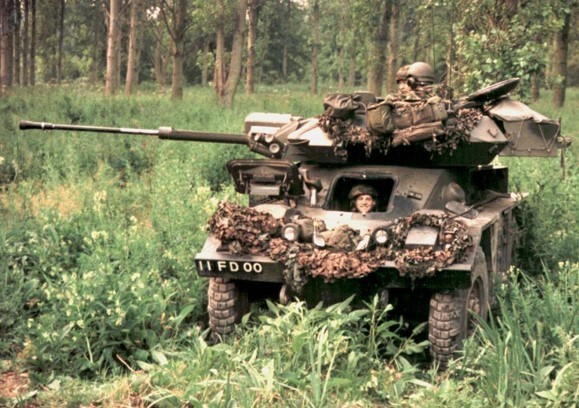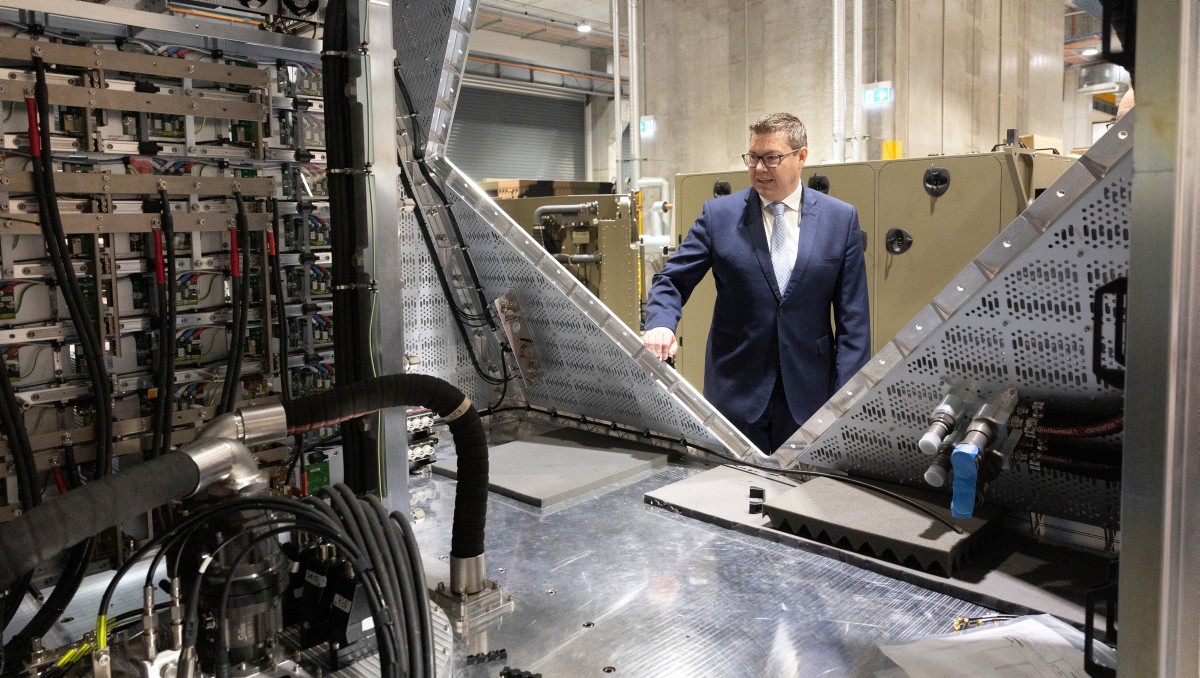Tailored Capability and Modest Competencies: the U.K.’s Cold War Territorial Army as a cost-effective model for Australian Army expansion?
How can we generate more land capability mass at less cost? The Chief of Army has asked us to think differently. My earlier article challenged the assumption that only a full-time organisation can deliver ‘high-end’ competencies for modern warfare fighting – using the example of the Swiss militia army of the Cold War. This article looks at a very different part-time force.
The British Territorial Army (TA) of the Cold War received less formal training than the contemporary Australian reserve, yet it was still fit for purpose. The TA had an essential role within NATO strategy to defend Europe against Soviet invasion. It offers a model of how modest levels of competency combined with good weapons and esprit de corps may offer a cost-effective option for essential defensive tasks.
The 2016 White paper reiterated defending Australian territory as the highest Government priority, yet Army has not planned nor trained for territorial defence since the 1990s, expunging its memories of a ‘Defence of Australia’ role secondary to that of the Navy and the Air Force. Nevertheless, a raiding strategy offers enemies the means to tie down our land force, with seizure of undefended urban areas a particular challenge. The simple exercise of listing key locations onshore and forward bases offshore that will need a defence presence in a crisis highlights the challenge posed by Australian geography. Territorial defence is a traditional and logical task for the locally recruited and nationally dispersed army reserve, but as its standards have risen to allow it to supplement the regular Brigades, numbers have fallen. Currently, few citizens can meet the substantial training obligations.
The purpose of this article is to:
- sketch the British Cold-War TA force model
- explain the concept of operations for the territorial Force
- prompt discussion about the value of forces with modest competency
The British Territorial Army (TA) like the Australian Citizen Military Force (CMF), played a central role in both world wars. After the second, both similarly shrank, yet during the Cold War could still field many Brigades and independent units. In both organisations soldiers paraded for training one evening a week, one weekend a month and for two weeks annual camp. Units had strong geographic affiliations with and company drill halls were a community fixture and a locus of enduring tribal identity.
Enlisting into the TA required some basic administrative checks, a certificate from a doctor and a commissioned officer to administer the oath. A soldier could then participate in unit training and attend the next two-week recruit course. Some units mandated more initial training: Parachute Regiment soldiers had first to pass selection and the parachute course. From that point, tests administered by regular SNCOs could assess the soldier as competent (to use the current term) and deployable. For infantry units training focused narrowly: skill at arms, fitness, NBC defence, trench construction and minor tactics – emphasising the defensive battle, local counterattacks and fighting withdrawal. The phenomenon of informal learning by ‘osmosis’ during activities alongside better trained peers was often a surprise to full-time instructors. Of the dozen or so training weekends a year, perhaps half, including live fire qualification shoots, were ‘mandatory’, with attendance incentivised by a substantial annual tax-free bounty.
While collective training standards for operations other than the defence never approached those of regular units, the TA was remarkably flexible and adaptable. For example, unexpected aircraft availability might see soldiers conduct a weekend parachute exercise in Germany at only several days’ notice. The equipment of TA units also reflected operational priorities. Like in Australia, but less reasonably, uniforms were not suited to the cold or rain – yet good combat equipment was issued. By the early 80s each soldier had an NBC ensemble, small arms had optic or night sights and every infantry section a Carl Gustav antitank weapon. Also reflecting the armoured enemy, at a time when Australia fielded four MILAN guided missile launchers, every TA unit anti-armour platoon had sixteen, was equipped with thermal vision sights and each soldier fired a live missile every year.
Like the CMF, the TA existed for major conflict and could only be called out by Royal prerogative. What infantry units would do on mobilisation was clear and regularly exercised. Parade at their drill hall, draw weapons, equipment and ammunition, go to the nearest range and zero their weapons, and then get on the trucks taking them to a ferry or an airport. On reaching a pre-planned location in Germany they would dig in. Once one position was created and camouflaged, they were expected to dig further deception positions and conduct rehearsals. The process was regularly exercised and could be done in a matter of days.
Where did such a narrow capability fit strategically? During the Cold War the main effort of the UK land force was the four (later three) regular armoured divisions of the British Army of the Rhine (BAOR), pre-positioned in central West Germany, whose role was to defend against an anticipated attack by the Soviet army across the West German plain. In a crisis, BAOR would be reinforced by the UK-based and mostly TA, 2nd Infantry Division and various independent TA units and formations such as 44 Parachute Brigade. These troops had narrowly defined operational tasks: rear area security, bridge demolition guards and area defence.
If the Warsaw Pact attacked with little warning, the TA would be unlikely to play a forward role: the British armoured divisions in West Germany would fight unsupported. However, if there was a period of tension during which the adversary mobilised massive Soviet reserves to East Germany, the British Army would need to fight a more flexible defensive battle. Soviet doctrine was to advance on multiple axes in rapidly moving columns, with multiple reconnaissance probes. They would try to bypass resistance and only slow when they needed to deploy to mount a major attack.
The role of the TA was to delay probing, provide depth and secure manoeuvre space for BAOR, initially deploying behind the UK armoured formations. Across the North German plain, positions would be prepared within and on the edges of forests, and in the rear of villages, with MILAN missile fields of fire across the open fields. The design for battle was that once the TA were in position some of the armoured formations would be withdrawn for later counterattack and the rest would fight a withdrawal battle. The task was now simple and feasible: impose delay. Bridges needed to be defended for a matter of minutes until engineers could demolish them. The static defence framework had to defeat Soviet reconnaissance and probing attacks: TA company positions in villages and forests would block advances through them and their MILAN would disrupt bypass.
Crucially, the defensive positions held by the TA were never expected to defeat a Soviet main effort, which had the artillery firepower to overwhelm any static defence. The effect they could deliver was to slow the enemy by a matter of hours and ensure any breakthrough by the Soviets would be by a major formation in assault array – an appropriate target for a flanking counter penetration by depth UK armoured units
Contemporary critics characterised TA capability as presenting a mere ‘speed bump’ to the Soviet war machine – but delay was what was required, and this criticism overlooks the likely similar outcome for a much more expensive regular force occupying static positions directly on an enemy axis of advance. The Soviet threat dictated a pragmatic force generation calculus that emphasised a cost-effective narrow competency model for part-time forces. Readily achieved levels of performance focussed on the operational task, meant members were deployable after only limited continuous training. This ensured most of the TA force was usable at any time and avoided the personnel wastage experienced amongst part-time units with higher training standards, such as the contemporary Australian Army reserve.
The UK TA model offered cost-efficiency, mass, and greater availability. In Australia, comparable logic could expand the reserve force by adding a substantial cohort with a more modest and employer friendly annual training commitment. The first stage of every soldiers training would deliver competency for static defence tasks making them available for deployment in a ‘defence’ subunit. Reservists willing and able would, as now, progress to additional employment training appropriate to their Corps. This would maintain or enhance the current capacity to field reserve units to reinforce regular brigades – using the voluntarily better trained subset of a larger defensive force.
Australia’s situation is very different from the Cold War UK. However, a similar need to generate mass for defensive tasks may emerge. Expanding the part-time force with a larger, reduced competency core offers Army the means to scale and, especially, avoid committing the current highly trained and well equipped but small regular force to basic defensive tasks in a crisis.
The views expressed in this article and subsequent comments are those of the author(s) and do not necessarily reflect the official policy or position of the Australian Army, the Department of Defence or the Australian Government.
Using the Contribute page you can either submit an article in response to this or register/login to make comments.





